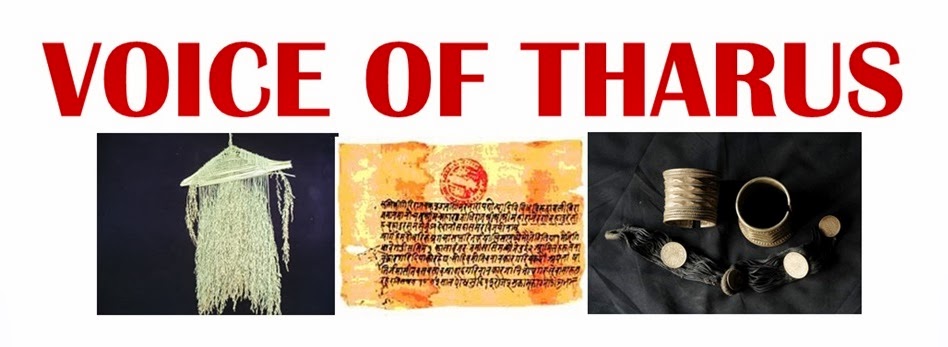I’m talking about castor oil, linseed oil, wild linseed, sesame and chamomile. While the linseed is still cultivated in large quantities, its importance is unknown to the farmers. Except for its use in few Tharu cuisines like the water snail curry for the non-vegetarians and jackfruit and bamboo shoots curry for the vegetarians.
Meanwhile chamomile is being cultivated for its essential oil, largely by the Tharus in the Mid and Far Western Nepal in the lands near protected areas. Just to prevent the wild animals marauding on the crops.
Let’s talk about these plants in detail.
 |
| Castor oil plant by Flickr user Kenneth Cole Schneider. (CC BY-NC-ND 2.0) |
One of the most neglected oil seeds is castor oil. These plants grow on fallow lands and garbage dumps on its own. In the past, castor oil was used to burn oil lamps in the southern plains of Nepal during Sukrati, the festival of lights called Tihar and Deepawali in other parts of the country. The oil was also used as a pain reliever. I’ve heard my grandmother telling about its benefits and applying it on her joints and back to get rid of any pain and stiffness. And my grandfather, a traditional healer, used to make concoctions using the castor oil to cure ringworm infections.
 |
| Castor seeds by Flickr user budak. (CC BY-NC-ND 2.0) |
The oil, used widely in shampoo, soaps, cosmetics and massage oils, helps fight signs of aging, moisturises skin, reduces skin pigmentation and acne, promotes hair growth, prevents premature hair greying and conditions hair among other benefits.
So, isn’t it sad that we’ve left cultivating this useful plant?
Linseed
Linseed oil has always been neglected. In the terai, people take it as a poor man’s replacement of mustard oil. However, this oil has plenty of benefits. And linseed has been termed as a superfood in the West.
 |
| Flax (Linum usitatissimum) or linseed by user Peter O'Connor aka anemoneprojectors. (CC BY-SA 2.0) |
People in the terai, especially the Tharus in the Eastern Nepal, still use linseed powder to garnish some curries like jackfruit, bamboo shoots and ghonghi (water snails). Without the linseed powder the curry is tasteless for them!
Though considered a poor man’s dietary intake, the medical science has confirmed that the linseed oil or the flax seeds protects from osteoporosis. It is also considered as a laxative and a hormonal balancer.
The oil also relieves inflammation and pain. That’s why you can see old people still resorting to linseed oil massages.
Linseed cultivation is so easy that you just need to sprinkle the linseed in the paddy fields when the rice starts to flower. The linseed grows well from the moisture remaining in the field and just few months after the rice harvest, you can harvest the linseed crop. And it has been cultivated since ages in this way.
So, let’s continue cultivating it and start using more linseed powder and linseed oil in our diets!
Wild linseed
This wild variety of linseed is still grown in the terai, but by limited farmers.
Sesame
Though the sesame has been tagged as a purity material – a must offering to Shani Dev and other gods in Hindu mythology, it is being cultivated less and less these days.
Chamomile
Chamomile is a recent addition to the list of cash crops being grown in the terai. Currently grown only in the Mid and Far Western Nepal, farmers need to spread its cultivation even in the Eastern Nepal.







